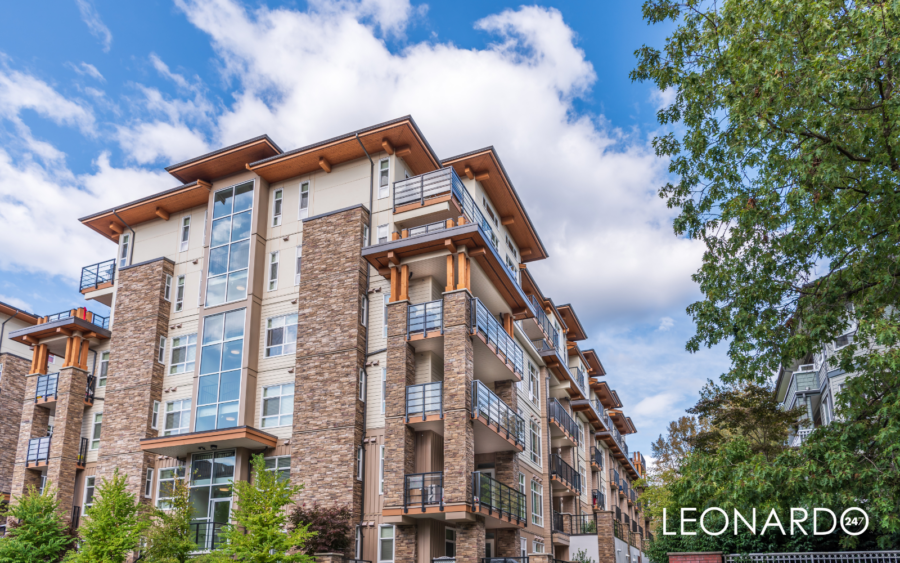When we think of multifamily financial risk, we tend to think of investment risk (“Am I going to get a return on this investment?”). However, we’ll use this article to focus on financial risk as it relates to property operations. These two things are closely intertwined – once you own the property there are risks to operating the property that if you don’t prepare for will impact the value of your investment.
Understanding and mitigating these risks is essential for ensuring long-term profitability and success. Below, we’ll delve into the nuances of financial risk in multifamily property operations, explore common challenges, and provide actionable strategies for mitigating these risks.
Common Multifamily Financial Risks
- Damage chargebacks to departed residents – When a resident moves out, operators have a finite amount of time to document any damages and assess the charges accordingly. Failure to do so within the mandated timeframe can result in lost revenue, as owners and operators will be unable to collect. This one is critical for student housing operators and owners.
- Resident Satisfaction – If residents have a bad experience, they might start looking for other housing options. Losing residents has a financial impact, even when you acquire new residents at higher rents. In fact, according to a 2022 survey from Zego, turnover costs are about $4,000 per resident. This includes advertising costs, unit repair costs, concessions, and lost rent. Keeping residents happy increases the chances of them renewing their leases. Prolonged periods of high vacancy rates or difficulty in finding suitable tenants, can lead to reduced rental income, affecting cash flow and profitability.
- Repair costs – Maintenance-related issues, such as plumbing, HVAC, and equipment failures, lead to inflated maintenance costs and unexpected capital expenditures (just ask our CEO).
- Capital Equipment Failures – Without proper preventive maintenance, owners are at risk of capital equipment failing before their scheduled useful life.
- Employee Turnover – Onsite employee turnover in the industry is over 50 percent. When key staff members leave, valuable institutional knowledge is lost. Gallup estimates “the cost to replace an individual employee can range from one-half to two times the employee’s annual salary — and that’s a conservative estimate.”
- Insurance costs – In recent years, there’s been a substantial surge in multifamily insurance costs. According to an article from GlobeSt, the cost of property insurance increased as much as 28 percent in some areas from 2021 to 2022. This surge has brought about coverage limitations, higher deductibles, and the lack of accessible and affordable private insurance.
RELATED
Mitigating Multifamily Financial Risk
- Consistency – In the centralization era, operators are all about increasing the efficiency of their onsite teams. When routine tasks are integrated into your team’s daily/monthly/quarterly schedule, you ensure consistency in the way things are handled across your portfolio.
- Inspections – Be proactive. Prevent problems before they happen. Quarterly inspections help you catch repairs early on.
- Preventive Maintenance – Studies have shown that performing scheduled preventative maintenance actually extends the life of equipment by at least 10 percent.
- Documentation – Document everything. For example, by tracking and documenting damages, operators can maximize damage revenue recovery and maintain a healthy bottom line.
- Visibility – You can’t manage what you don’t measure. The traditional way of doing things (an overreliance on spreadsheets and paper checklists) makes operational visibility a significant blind spot for operators. How can you better get in front of potential issues? You need access to real-time data.
- Training – It’s crucial to have a qualified team year-round to assess repairs. Unqualified or poorly trained teams work slower, make more mistakes, and cost you more money. So how do you prevent turnover? Invest in your employee’s success. Give them room to advance in their career. Recognize good work and invest in improving the tools available to them. Training should not only focus on liability-based topics but also include skill-based training and interpersonal skills, as your onsite staff, particularly maintenance, plays a crucial role in resident satisfaction and retention.
The Role of Technology in Managing Multifamily Financial Risk
Operators need to ensure their onsite teams are consistently using the latest policies, and procedures, conducting inspections, and utilizing the proper forms. Without a system, you must constantly ask them, “Did you do this? Did you do that?” Or you have to check the shared drive to make sure the spreadsheet has been updated with their daily tasks.
Technology, such as Leonardo247, provides greater visibility and oversight to hold the onsite team accountable.
For example, Leonardo247 users have access to dynamic forms, such as move-out inspections, to document unit conditions. This ensures thorough inspections of damages, facilitating necessary repairs or replacements. Repair or replacement charges noted on inspection forms seamlessly integrate with the resident’s ledger, eliminating manual entry and saving time for property management teams. Comprehensive inspection reports with notes and attached photos are automatically stored for future reference.
At Leonardo247, we make sure you’re doing the right things, at the right time, with the right person, in the right way. While unforeseen events can still occur, demonstrating proactive risk management with Leonardo247 helps minimize your exposure to financial risk. Request a demo of Leonardo247 today.
